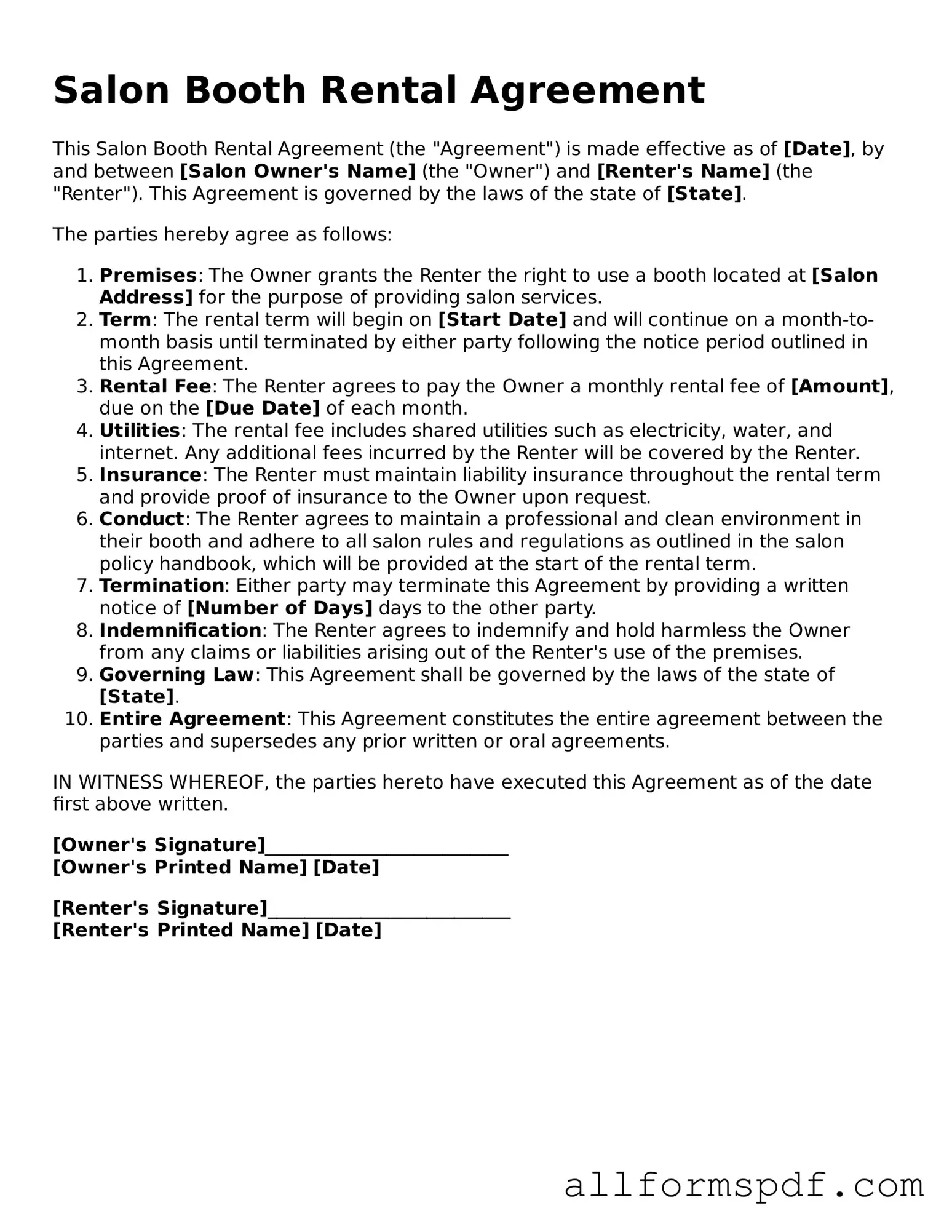Salon Booth Rental Agreement - Usage Guidelines
Filling out a Salon Booth Rental Agreement is an important step in establishing a professional relationship between a salon owner and a booth renter. This form outlines the terms of the rental arrangement, ensuring both parties understand their rights and responsibilities. Follow these steps to complete the agreement accurately.
- Gather necessary information: Before you start filling out the form, collect all relevant details, including your name, contact information, and the salon's address.
- Identify the parties: Clearly indicate the names of both the salon owner and the booth renter at the beginning of the agreement.
- Specify the rental terms: Fill in the rental period, including start and end dates. Make sure to note any renewal options if applicable.
- Outline payment details: Enter the rental amount, payment schedule, and acceptable payment methods. Be clear about any additional fees that may apply.
- Include salon policies: Review and incorporate any salon-specific rules or guidelines that the booth renter must follow.
- Detail maintenance responsibilities: Specify who is responsible for cleaning and maintaining the booth and shared areas.
- Sign and date the agreement: Both parties should sign and date the form to confirm their acceptance of the terms outlined.
Once the form is filled out, both parties should keep a copy for their records. This agreement serves as a reference point for the duration of the rental relationship, helping to prevent misunderstandings and ensuring a smooth working arrangement.
